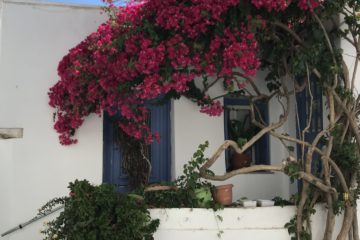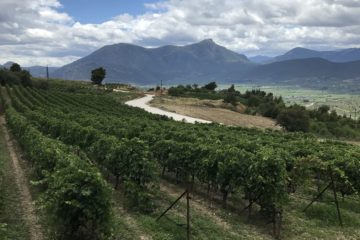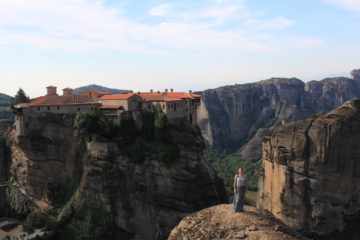While we were excited to get to Chengdu, our journey there was more onerous than for our other stops in China. Specifically, it involved a 16 hour “soft sleeper” (private vestibule with 4 total beds) overnight train ride from Xi’an. Soft sleeper train rides are pretty great from our experience, but this one was less enjoyable for two reasons: old age and youth. Another bed in our cabin was inhabited by a very old Chinese man who snored incessantly, while the other bed was occupied by a young mother and her 14 month old daughter who slept sporadically and spoke/yelled frequently. These, coupled with the jerky stops of our train, ensured that we slept as little and uncomfortably as possible on this journey.
Fortunately, we arrived (exhausted) in Chengdu to find that we were staying in a pretty awesome hostel, replete with a DVD room, pool table and central lounge area to hang out. It was gonna be alright. We ultimately spent 6 nights in the city, during which we experienced several unanticipated high points and low points set forth below. While I don’t think either of us would say that Chengdu as a city was terribly memorable, it’s safe to say that our experiences there were unique for us thus far on our trip and that it will stick with us going forward.
PANDAS!!!!!
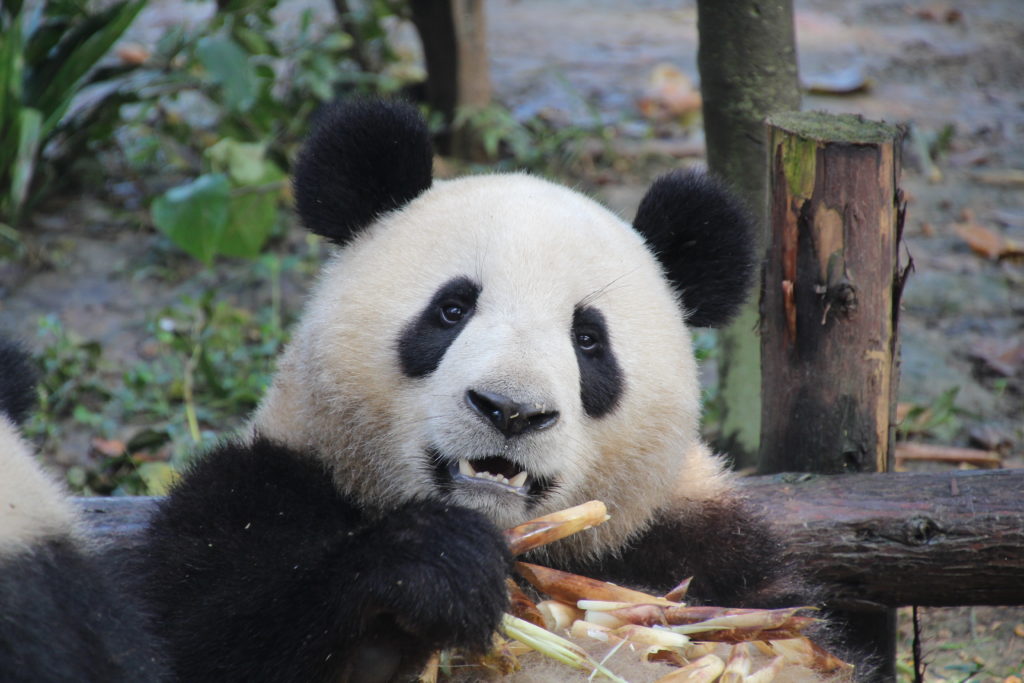
Who me? Yes you!
Without further delay, let’s get to the highlight of our trip. Pandas, the national treasure of China (apparently). [Editor’s note: Obviously.] A panda breeding center is located just outside the city, along with several other panda reserves nearby. The animal is incredibly beloved in China, which the city has embraced by emblazoning pandas on every sign that exists in the damn place, including taxi cabs. It’s basically its mascot, which is kinda cool/weird.
Anyway, pandas are a big deal here. It’s arguably the main reason anyone visits this place. Therefore, we knew we had to get up bright and early in order to visit them before the experience was ruined by hordes of camera-wielding Chinese tourists. As some of you may know, Jess doesn’t *do* mornings. It’s a non-starter. Nonetheless, her excitement for pandas was so palpable that I was able to coax her out of bed and into a cab (bleary-eyed, with a lukewarm cup of instant coffee in hand) at 7am for us to make our way there. She was still non-verbal at this time of day, but the fact that she didn’t try to murder me with a bobby pin for waking her up that early is incontrovertible evidence that she was incredibly psyched for the pandas. [Editor’s note: This is basically accurate. Mornings and I do not get along.]
Because we got to the panda breeding center so early, we largely had it to ourselves for a while. This allowed us to wander the sprawling grounds of the park, which has the feel of a large, well-organized zoo. There are bamboo-lined walking paths, a lake in the middle and massive trees everywhere, so it really is quite bucolic as compared to typical Chinese sites (aka: smog and large structures). We rushed to the nearest panda locations and were confronted with abject adorableness. It truly exceeded expectations, eliciting squeals of glee from Jess (who was still nonverbal due to the early hour, but at least capable of conveying joy rather than anger).
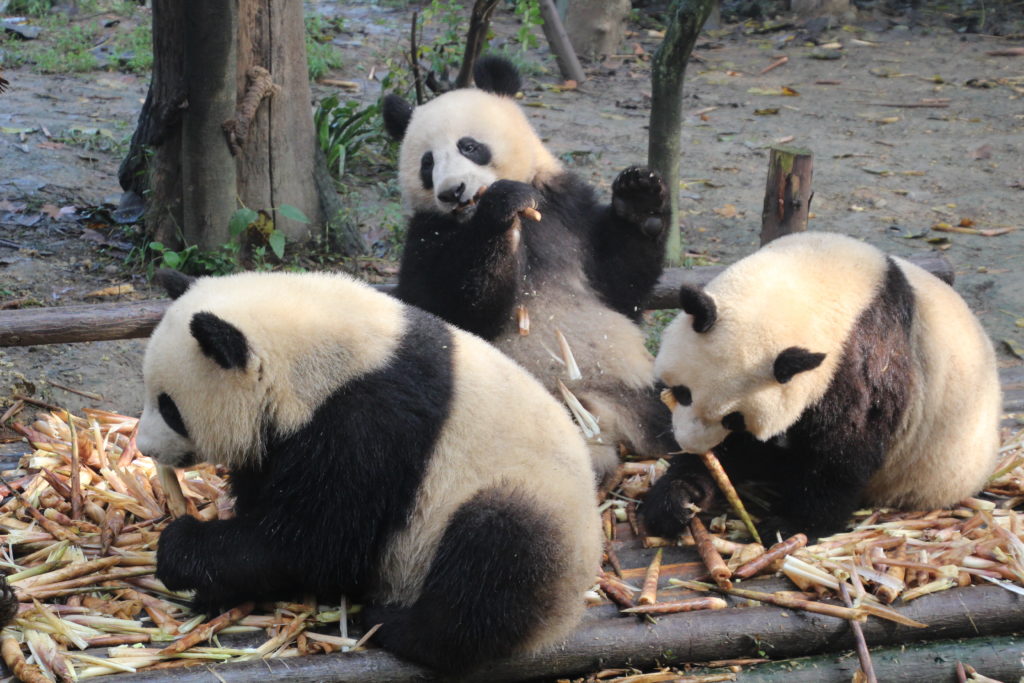
A pile o’ pandas
Due to the setup of the park, you’re really able to see different stages of the panda lifecycle. We were able to watch babies push into each other as they slipped in their crib while trying to get traction with their legs to stand up [Editor’s note: Gahhhhhhhhhh so fluffy!], adolescents slowly/clumsily climb trees and sleep in branches, and adults gluttonously eat the massive piles of bamboo left out by the park staff. While it was lethargic, the eating was pretty adorable – they would just oscillate from laying on their backs while eating, sitting up and eating bamboo as stray shards were deposited on their overgrown bellies, and rolling onto their stomachs and just shoving their faces into the bamboo to eat it (presumably because they were tired of holding the pieces to their mouths). [Editor’s note: I noted some real jealousy in Rorie’s eyes at this point. I think he’d be perfectly content to have this lifestyle.]
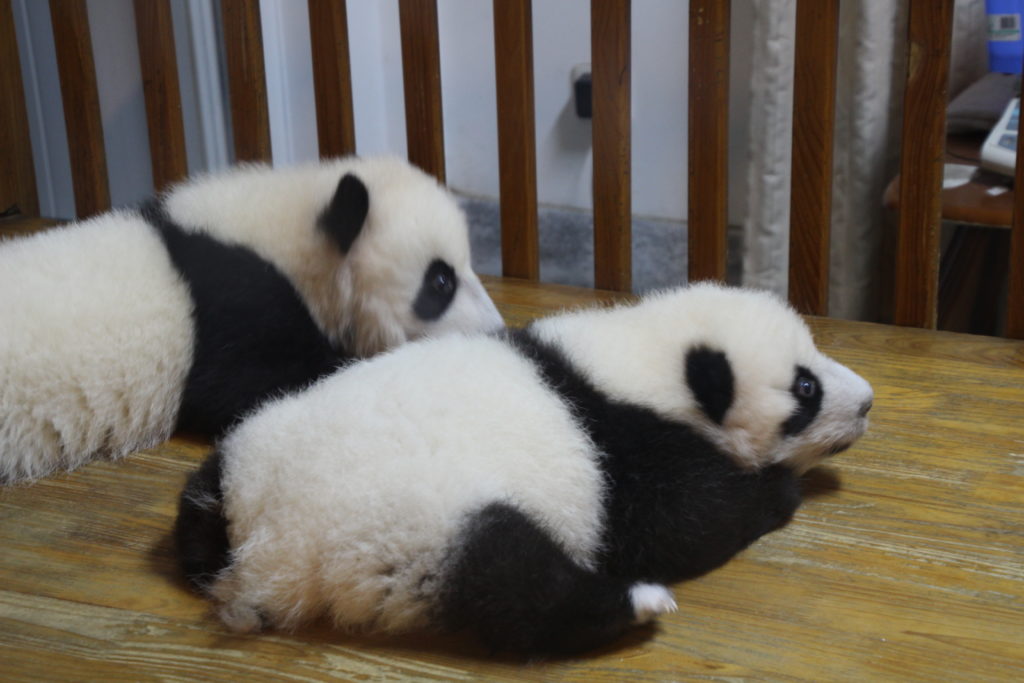
Ok. I mean, like, can you even? I literally cannot even.
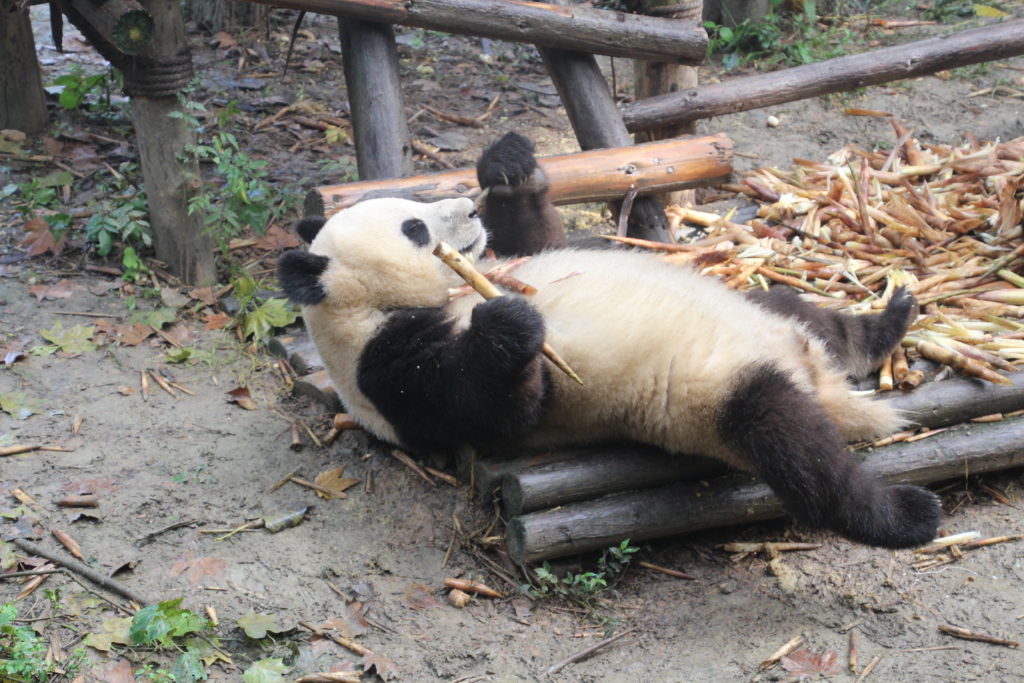
Rorie’s favorite panda of the day, for his sheer laziness and inability to do more than shovel food to his mouth while lying on his back. (Or hers, I guess.)
As you can tell, visiting the pandas was like a pie eating contest where there’s never enough pie. You can just eat for days, much like they seem to do. The experience, which we timed to coincide with the first pretty, sunny day of our trip to Chengdu, absolutely met expectations and was a true highlight of our trip to China.
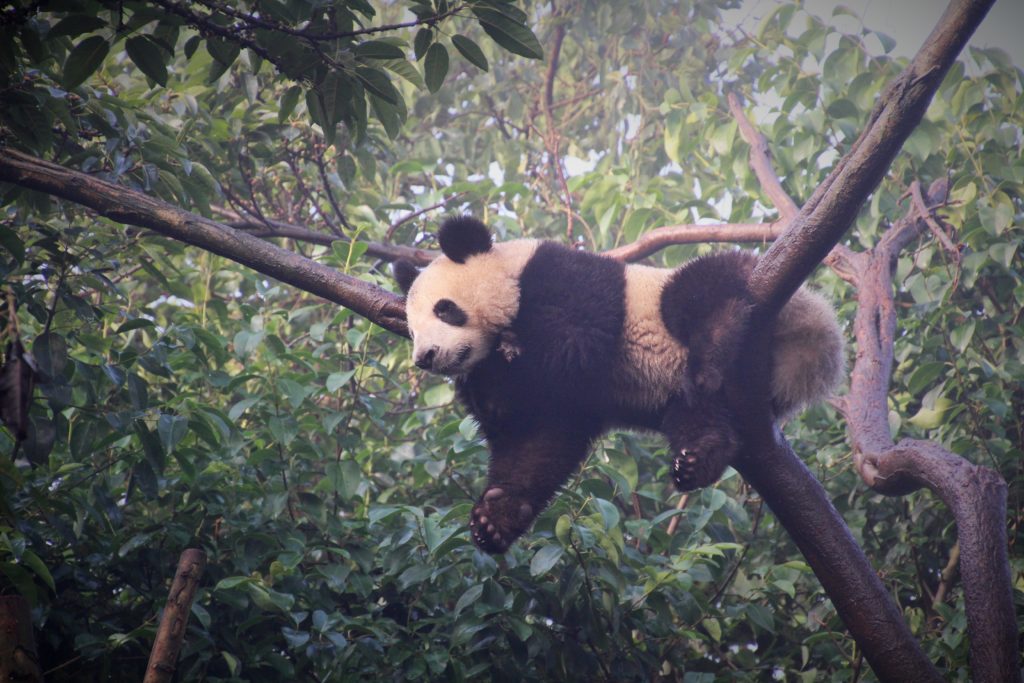
Surprisingly good climbers as it turns out.
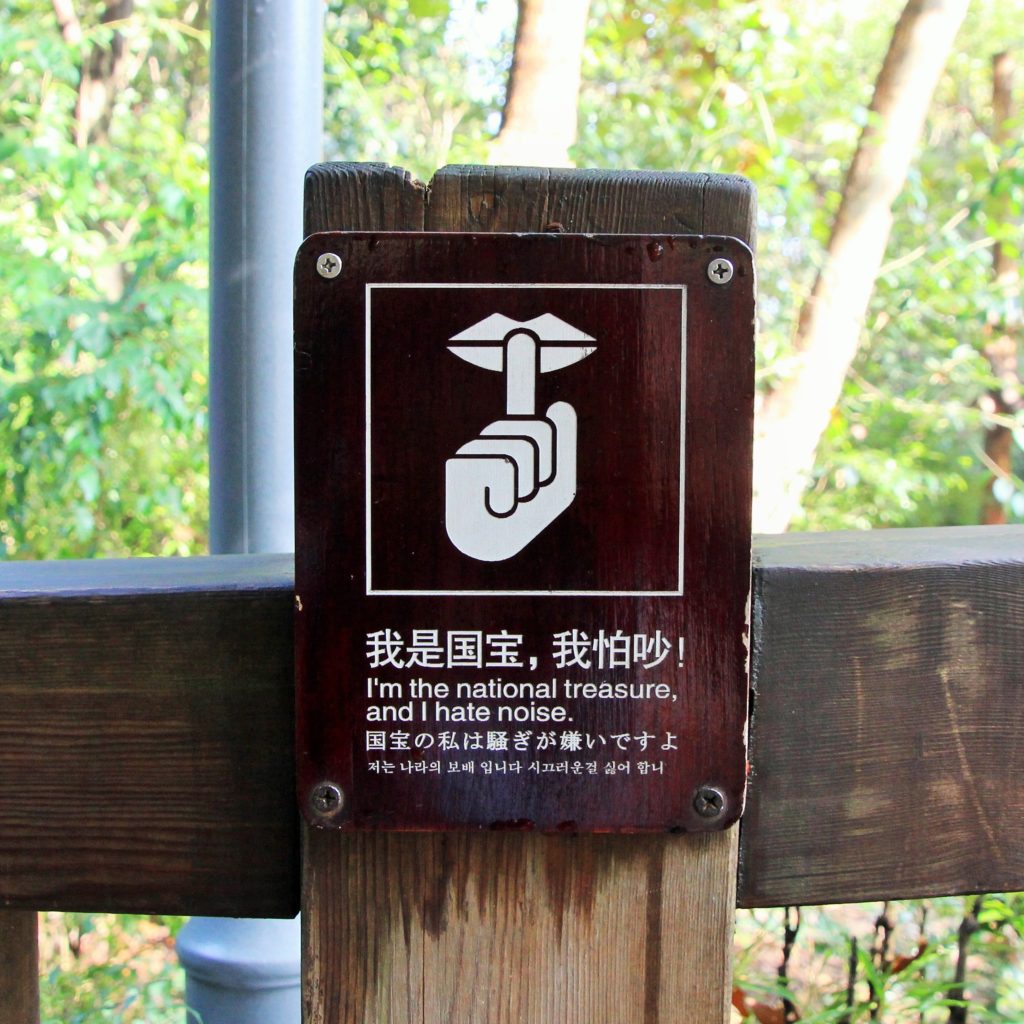
One of my favorite signs in China, and maybe my new life motto?
Sichuan Cooking Classes/Expeditions
While we’ve imbibed a lot of Chinese food, we hadn’t taken any cooking classes until getting to Chengdu. This is because it was supposed to be the culinary highlight of our time in the country. This whole Sichuan region is known for its incredibly spicy food, as well as being the birthplace of the “hot pot” dishes that are now common across China (where you cook meat and veggies in a boiling vat of spicy oil). [Editor’s note: It turns out that the region’s famous flavors come primarily from the Sichuan peppercorn, which is not so much spicy in the sense that we are used to, but instead has a very particular flavor and makes your tongue and lips actually tingle, and almost go numb when you eat it. While it wasn’t “too spicy” in the way that we were expecting, neither Rorie nor I actually liked the taste of the peppercorn very much, which was a shame because it was a primary ingredient in pretty much every regional dish.]
We first decided to participate in a dumpling making class that was offered for free by our hostel. It was hosted by a Chinese fella named Winter, who was joined by his two lovely assistants: 8 year old Vivian and a 12 year old girl with an unpronounceable first name (no matter how many times we earnestly tried). We started by going together to the local community market, where Winter pointed out different food types (e.g., thousand-year eggs, Sichuan peppercorns, live frogs/eels/fish, etc.) and told us about how they fit into popular Sichuan cuisine. The girls gleefully bounced around, practicing their English with us and generally just being adorable.
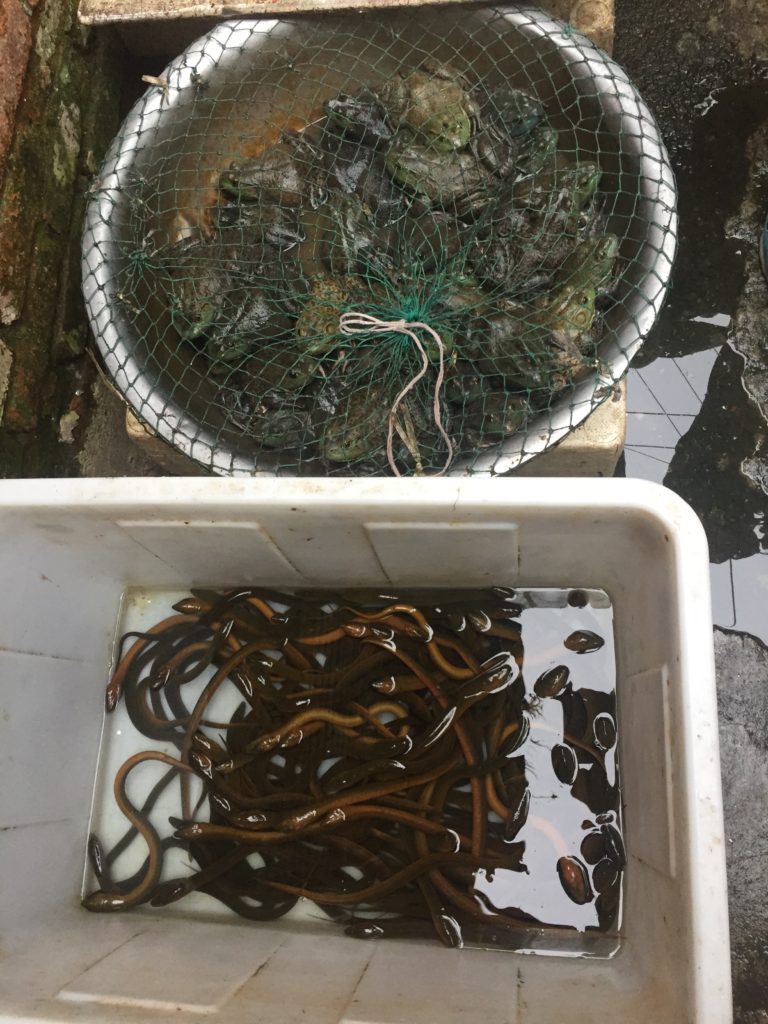
Live eels and frogs at the local market, neither of which (thankfully) were on our menu.
Winter also gave us each “missions” to perform in the market, which ranged from the mundane (e.g., mine, which entailed locating a special type of pepper) to the more interactive (e.g., Jess’s, which involved working with a food vendor to learn how to make “cross arm” dumplings). While we had walked through this same market the previous night and thought it was interesting, it was extremely rewarding for Winter to actually give us a tour of the same location and explain everything to us. He also helped us shop for certain items we’d need later for our dumpling-making class.
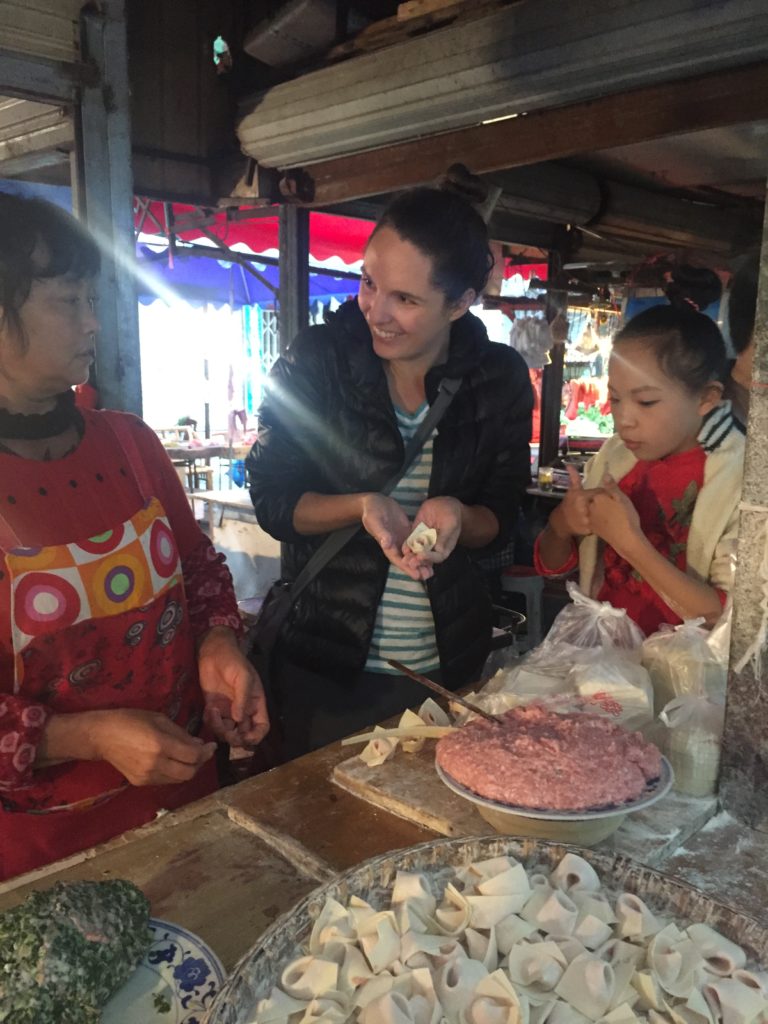
Showing my dumpling making technique at the market. Our young friend seems impressed; my instructor not so much.
Upon returning to our hostel, I sat with my two new best friends (the little gals, who had taken a liking to me) and we were joined by a number of other inhabitants of our hostel. Together we spent the evening learning how to make dumplings (and subsequently eating them), then eventually just bonded with some and spent the night as travelers do – highlighting past and future travel locations, swapping stories and ultimately becoming close friends just as quickly as we’d end up saying adieu. The whole experience was a ton of fun, particularly because we were able to really be social at our hostel in a way that had evaded us at our earlier stays in cities.
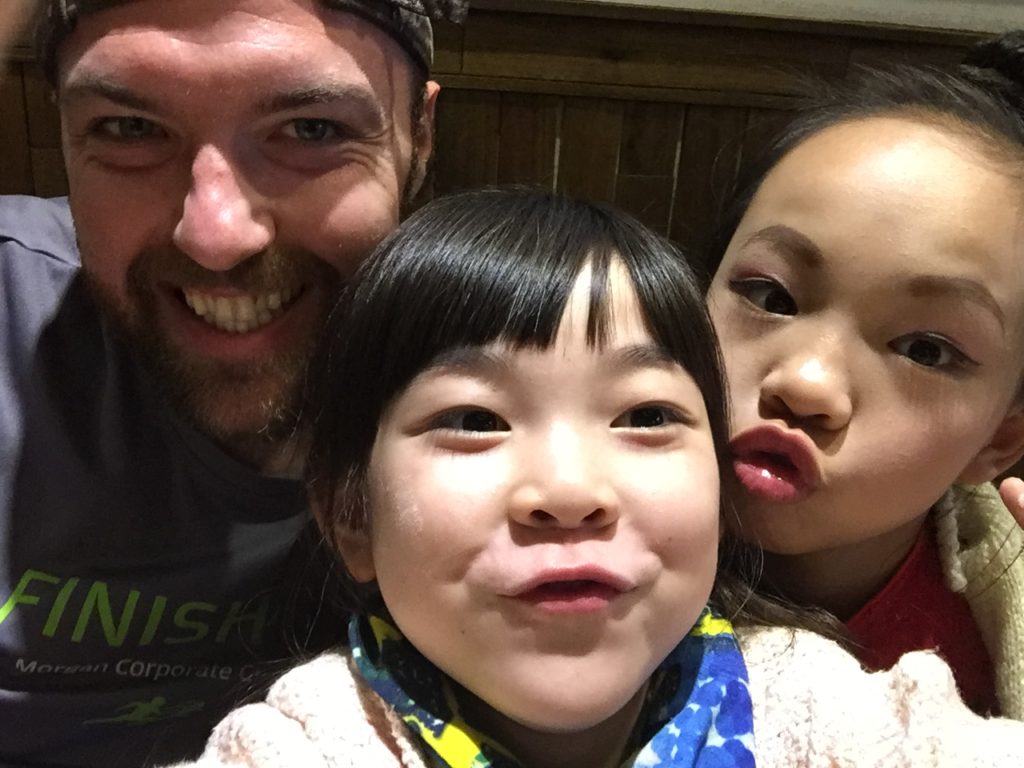
Rorie and his new friends. Photo credit for this selfie goes to Vivian (center).
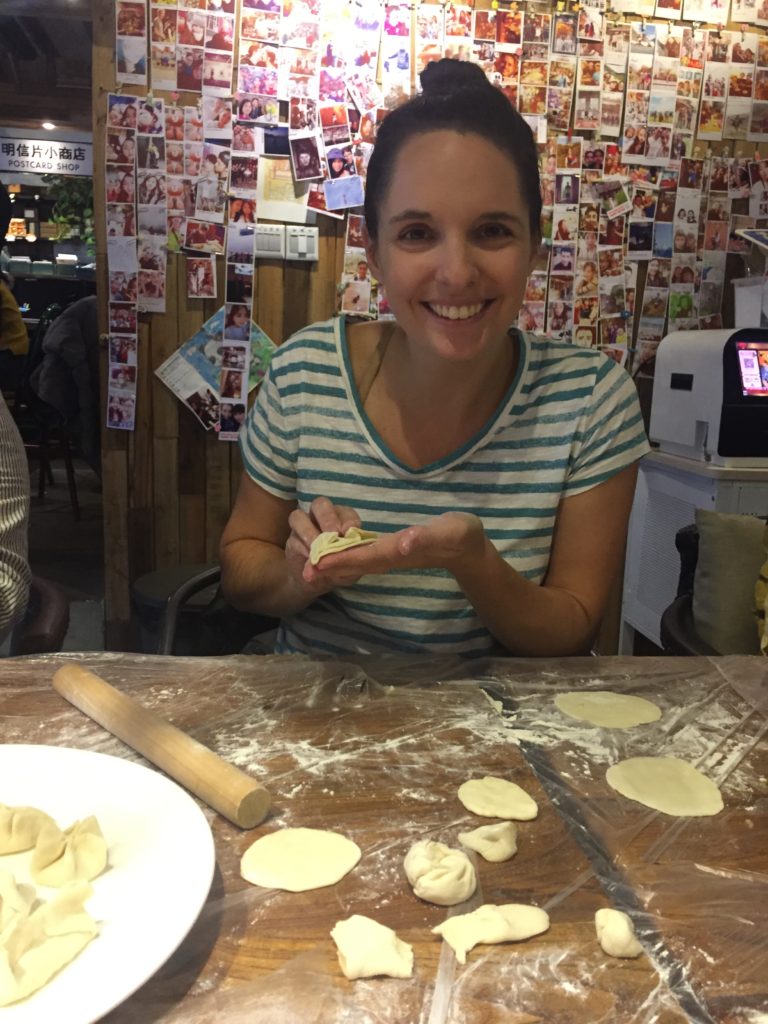
Delicious craftiness at our hostel.
Not content with this single foray into Sichuan cooking, the next day we were scheduled for a full-on cooking class with Winter. We were joined on the tour by fellow travelers Pamela and Laura, who were from China (the northern part, near Harbin) and South Korea, respectively. We started with the same tour of the food market, but with a slight twist – Jess had to identify and buy “garlic sprouts” (we refuse to believe that they’re any different from green onions), while I was forced/asked to take shots of various flavors (e.g., plum, rose, tiger penis, etc.) of gut rot known as Baiju, which is the local Chinese liquor. It was a fun time, but that Baiju still hurts. Ugh. [Editor’s note: No, Rorie is not kidding about the tiger penis. Apparently it’s “special for men.” Gross on so many levels.]
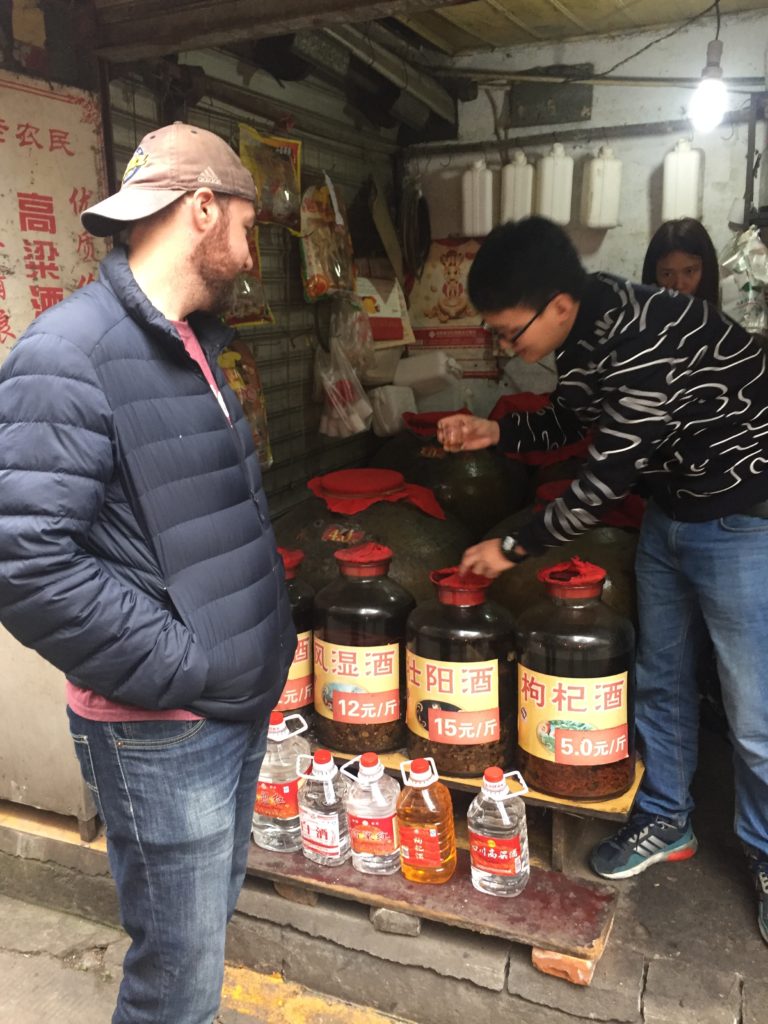
Winter points out different types of Baiju while Rorie looks on with dismay.
We eventually decamped to a local kitchen where we were able to hang out and chat over tea (we were fortunate that Pamela and Laura each spoke great English), while learning how to make several dishes: twice-cooked pork, ma po tofu and pickled vegetables. The lessons involved us watching a local chef, named Bo, perform a task, then us mimicking him while Winter guided us in English. From cutting the ingredients with the massive cleaver (that’s the only knife they use in a Chinese kitchen, apparently) to sautéing them in a wok, it was a lot of fun to try our hand at the cooking. Jess and I even managed to beat our Asian counterparts in preparing the twice-cooked pork as judged by Bo (theirs was too salty, apparently), where I manned the wok and Jess did the hard work of divvying up and inserting the ingredients as appropriate (we then switched roles for the tofu).
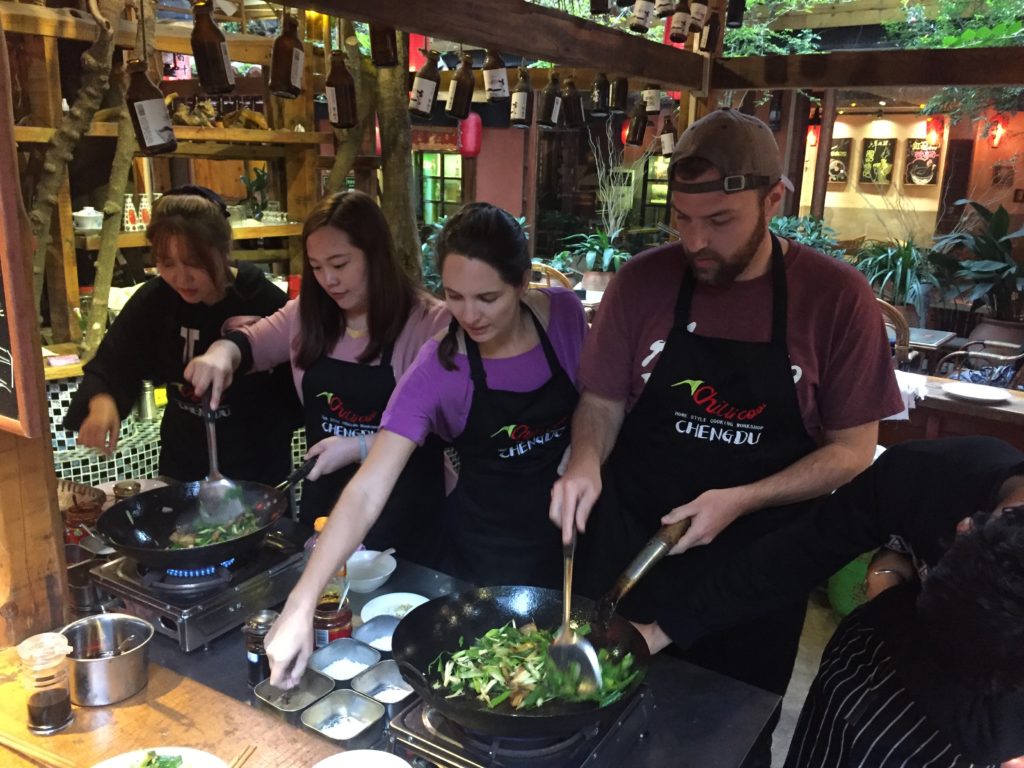
Rorie at the wok while Jess selects spices.
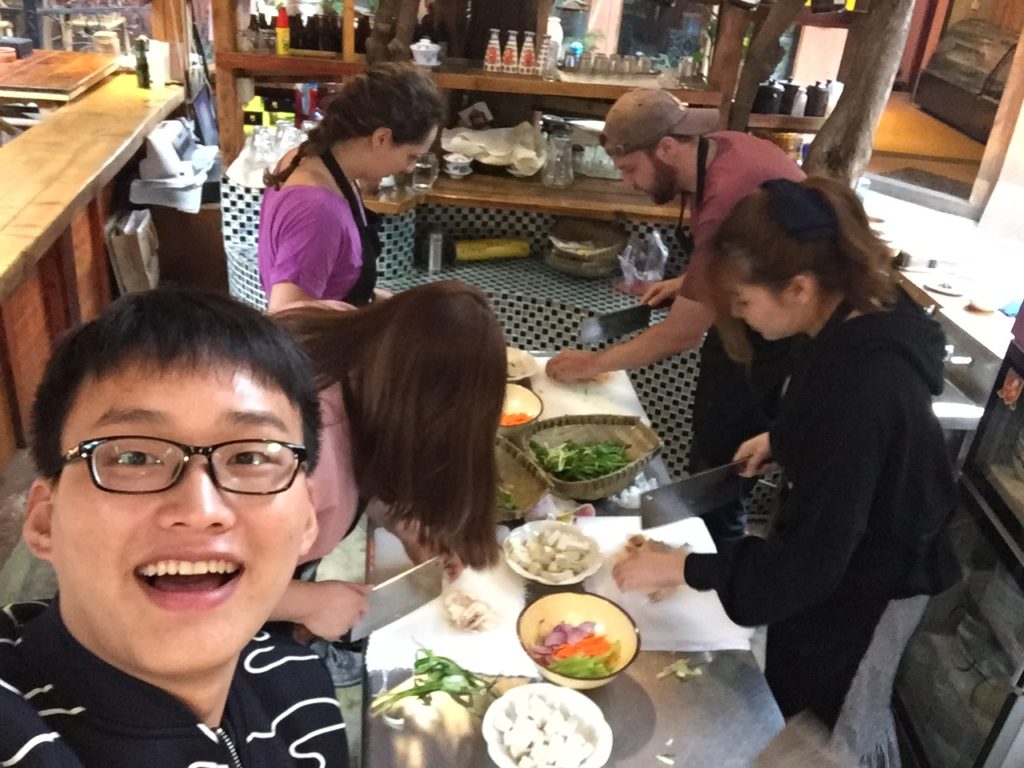
Winter, our guide, takes a selfie with his dutiful class
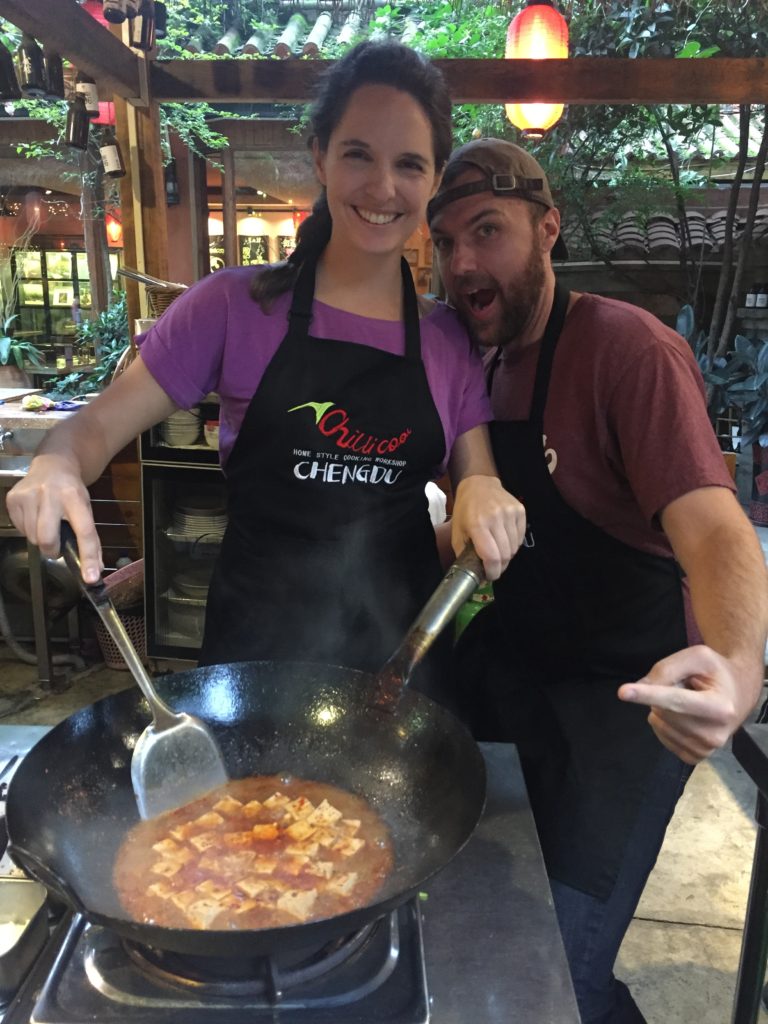
Ma Po tofu, a regional delicacy
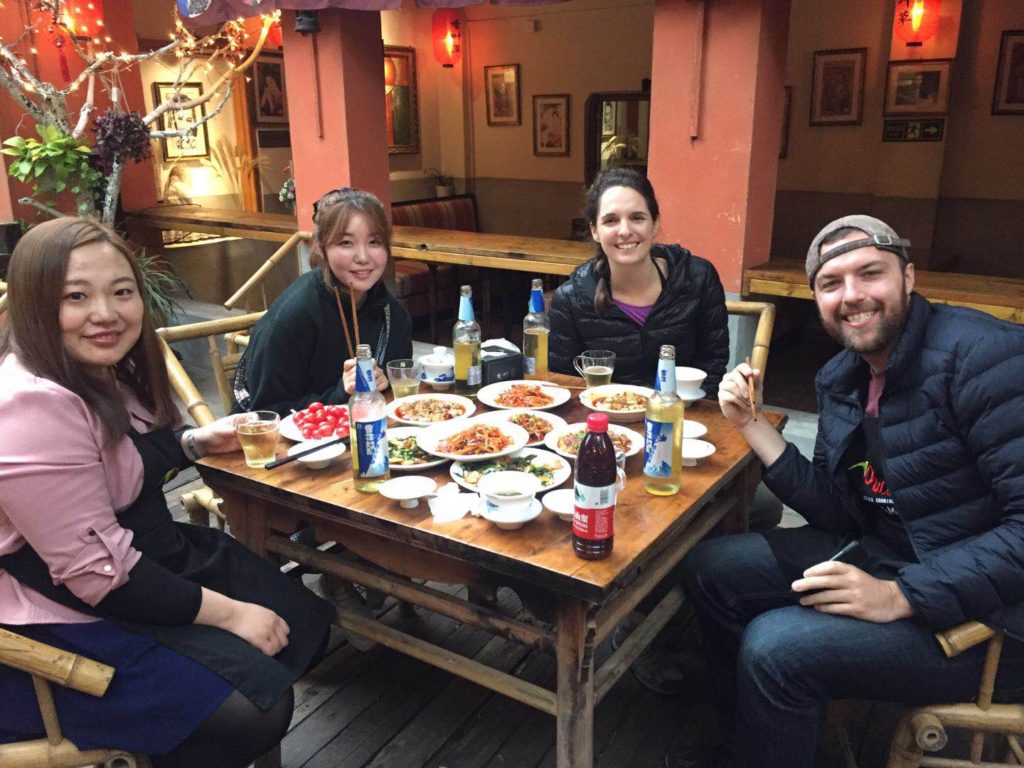
Our group enjoying the spoils of our labor
The cooking class was loads of fun, but the highlight of it, as with the dumpling-making class, was the conversations with the other folks in our group. We’ve learned that it isn’t always easy to be social with others while traveling, particularly when travelling as a couple where it’s easy to just withdraw into ourselves. Therefore, these tours and group classes have been great for opening us up to opportunities to meet and get to know other travelers, which has been hugely rewarding. We hadn’t ever expected Chengdu to be the city where we’d truly mingle the most with other backpackers, but it’s had a lasting impression.
Surviving the Plague
This final component of our time in Chengdu was much crappier than the others and struck us completely out of the blue. It started with me getting a sore throat one day, but then devolved into both of us getting a brutal cold for 3-4 days that completely laid us up and sapped us of all energy. We were sneezing, coughing and blowing our noses constantly, to the point that we resorted to stealing rolls of toilet paper from the housekeepers so that we would have adequate tissues. We were shameless in our misery.
Too exhausted to move or function, we decided to skip visiting the famous Leshan Buddha (look it up, it’s cool) on our last day in the city in favor of consuming sketchy Chinese medicine to try and get healthy. [Editor’s note: Don’t worry, mom and dad – he’s exaggerating this part. We found Tylenol Cold. It was fine.] [Note to the editor’s note: I’m not exaggerating at all, actually. We ran into Winter, explained our ailments and he dug a random packet of the Chinese equivalent of Theraflu (from what we could tell) out of his pocket to help us. We were so desperate to stave off death that we took it without even bothering to try and translate it. We’re still alive, so it’s all good.] Multiple people commented on how crappy I looked, which I guess is a backhanded compliment about how awesome I normally look? I’m choosing to read it that way. Don’t tell me otherwise.
Unfortunately, this vicious cold happened over the last half of our time in Chengdu and really cast a negative light on what had otherwise been a perfectly enjoyable experience. We’re fortunate in that we’ve recognized that this is a marathon instead of a sprint, so it’s more important for us to skip a single sight now in favor of healing up and enjoying others in the future. A year of travel is a long time with lots of opportunities to see cool stuff, so it’s best to take it easy where possible. Us internalizing these lessons is either a sign of growing maturity or us just being too sick to act differently at the time. You decide.
Now that we’re healed up, we’re on to Zhangjiajie to spend 4 days hiking through the national park that provided the scenery for Avatar! Should be incredibly scenic and we’re super excited for it!
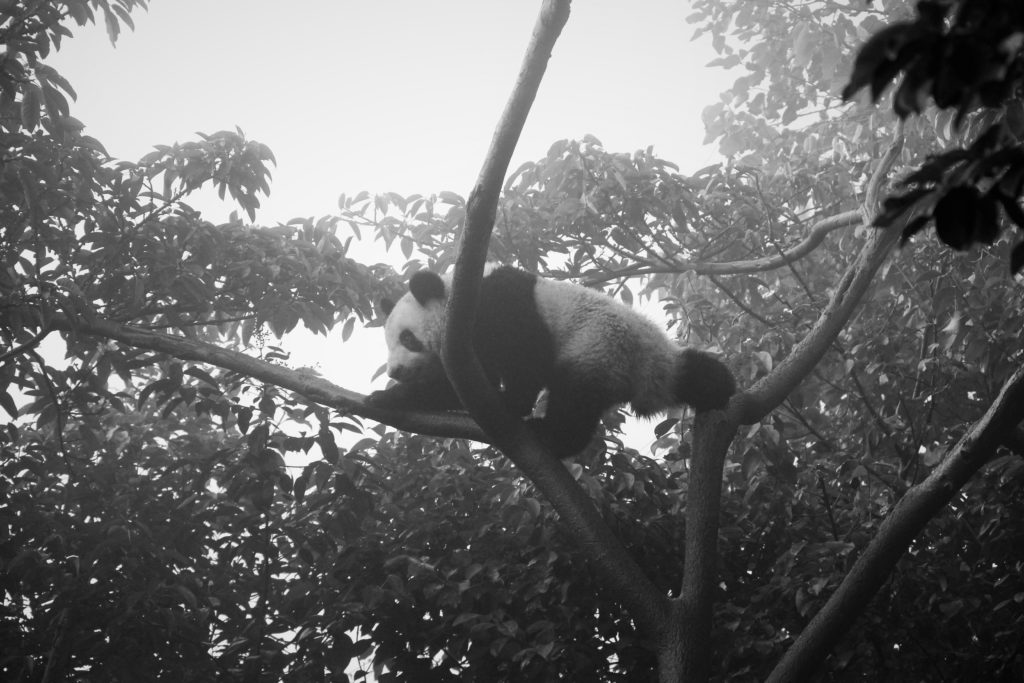
It’s all a balancing act.
